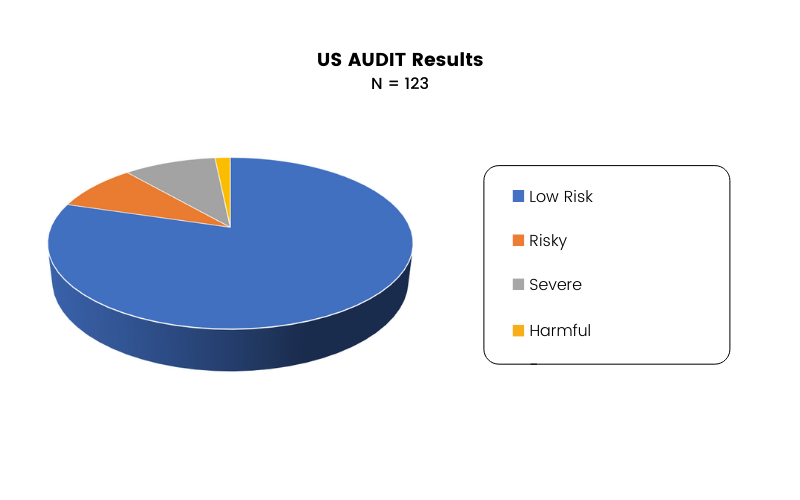April is Alcohol Awareness Month and while it was initially established in 1987 to focus specifically on college-aged individuals, it has since become an opportunity for all to update our understanding of the impact of alcohol use and Alcohol Use Disorder (AUD).
According to the NIH’s National Institute on Alcohol Abuse and Alcoholism, an analysis of death certificates from 2019 and 2020 showed that deaths involving alcohol rose from 79,000 to 99,000; a 25.5% increase. The Alcohol-Related Disease Impact application estimates that each year there are more than 178,000 deaths annually (approximately 129,000 male and 59,000 female) attributable to excessive alcohol use. This makes alcohol one of the leading causes of death in the U.S.
Clearly, the impact of alcohol use in our country is significant. According to the NIH, approximately 62.3% (over 174 million individuals) of the population uses alcohol, which serves to normalize the behavior, making it more challenging to tease out when it is problematic. In the past year, over 29.5M individuals were diagnosed with AUD, which accounts for almost 11% of the population, and there were over 6.6M emergency department visits either directly or indirectly related to alcohol use.
In a small sample of 123 patients (74 female, 49 male) who completed the US Alcohol Use Disorders Identification Test (US AUDIT) via ERPHealth’s GRO platform, 20.3% fell in the “risky”or higher range.

As April is also National Minority Health month, it is an opportune time to shed light on the intersection of alcohol use and AUDs in minority populations and the disparities that exist in those communities in relation to stigma and access to treatment. According to SAMHSA, over 32% of individuals in the BIPOC (Black, Indigenous, and People of Color) community, suffer from addiction and only approximately 6% get the necessary treatment. Problems like systemic racism and cultural biases are noted as increasing risk for BIPOC individuals who might struggle with mental health, resulting in substance use as a means to cope. Considering another factor impacting this particular challenge, in an article published in Alcohol Health and Research World, Dr. Maria Alaniz explains that alcohol availability and advertising are disproportionately concentrated in racial and ethnic minority communities. Not surprisingly, evidence shows a relationship between minority concentration, alcohol outlet density, and alcohol problems.
With awareness that mental health and substance use challenges impact people of color differently than their white counterparts, mental health and SUD treatment providers are increasingly aware of the disparities. However, medical bias, access to adequate care, and lack of cultural competence can all be barriers to BIPOC individuals seeking treatment. SAMHSA notes that eliminating disparities in behavioral health research is critical for achieving equitable outcomes for BIPOC individuals. Of importance, in order to gain the trust needed to engage participants, the research workforce must be representative of the community it seeks to serve. The behavioral health tech industry is increasingly focused on similar goals; supporting equitable access and engaging individuals for connection to the best fit treatment options. Here, there is potential for improved access to quality care at scale. This author is energized by the work being done toward these efforts.
Resources:
If you are concerned about your drinking and would like to explore whether you have an AUD: Rethinking Drinking: Alcohol & Your Health
To learn more about treatment options and to find quality care near you:
NIAAA Alcohol Treatment Navigator
For more information about alcohol and your health:
https://www.niaaa.nih.gov/
BIPOC Specific Resources:
The Racial Equity Support Line: (503-575-3764):
This hotline is open on weekdays from 10 AM to 7 PM PST and exists to help those dealing with the emotional impact of racism. This hotline will also provide additional resources if needed for your situation.
Beam Community
Short for Black Emotional and Mental Health Collective, this organization works to pair Black people with other Black medical providers, including therapists, physicians, addiction counselors, and more.
Melanin and Mental Health:
This organization helps people of color find other BIPOC therapists and other mental wellness professionals. Working with a therapist that understands the nuances of dealing with racism and other BIPOC struggles can help BIPOC patients feel more supported.
Recovery Dharma Online:
Based on Buddhist theology, this online support group is centered around BIPOC individuals dealing with and recovering from addiction.




